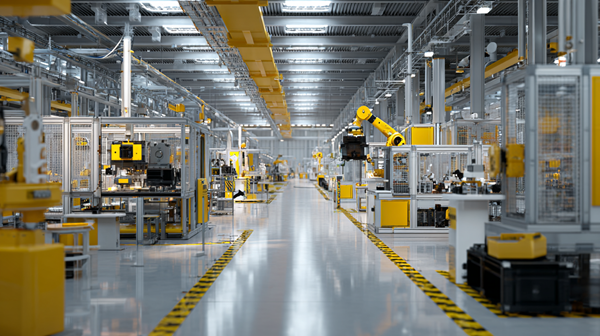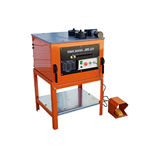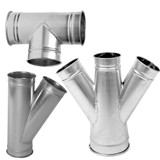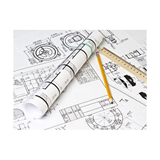Key Takeaways
- Modularity has moved beyond buildings. The same principles of off-site construction are now being applied to industrial equipment, from processing plants to conveyor systems, offering significant speed and flexibility advantages.
- Reduce on-site disruption and timelines. A modular process skid can be built and tested in a factory while you complete civil works on-site. This concurrent activity can cut project installation and commissioning times by up to 50%.
- Future-proof your facility. Modular equipment, like scalable conveyor systems or reconfigurable racking, allows your facility to adapt to changing product lines or demand without requiring a complete and costly refit.
- Calculate the full ROI. The upfront cost of a modular system may be 10-15% higher than a traditional "stick-built" equivalent, but the savings from reduced on-site labour, faster speed-to-market, and improved safety often deliver a superior long-term return on investment.
- Prioritise integration planning. The biggest challenge with modular systems is ensuring they integrate seamlessly with your existing infrastructure. A detailed plan for connecting power, data, and plumbing is a non-negotiable first step.
- Your partner determines your success. A modular project's outcome depends on the fabricator; choose a partner with proven experience in your industry and insist on a comprehensive Factory Acceptance Test (FAT) before shipping.
- Integration is your biggest risk. Prevent costly on-site clashes by using a detailed 3D model as the single source of truth and ensuring your modular fabricator and on-site contractors collaborate from the earliest design stages.
Introduction: The next frontier of industrial efficiency
For years, Australia's construction sector has been buzzing with the benefits of modular buildings, prefabricated components built in a factory to speed up on-site assembly. But a quieter, and arguably more significant, revolution is now happening inside the four walls of our industrial facilities. The same "build it off-site" logic is being applied to the complex machinery that powers our manufacturing plants, processing facilities, and warehouses.
In the fast-paced Australian market of 2025, where agility and speed-to-market are critical for survival, traditional, slow, on-site equipment builds are becoming a competitive liability. A recent report from the Ai Group highlighted that Australian manufacturers see operational efficiency as their top priority. The push for modular equipment is a direct response to this need, offering a way to expand, upgrade, and adapt your operations faster and with less risk. This article explores how the modular trend is moving beyond buildings and what it means for your next major equipment investment.
The business case: Why modular is moving beyond construction
The core appeal of modular equipment is that it transforms a complex, on-site construction project into a streamlined, factory-led manufacturing process. Instead of bringing an army of contractors, welders, and electricians to your facility for months, the majority of the work is completed in a controlled environment
This delivers three key benefits:
- Speed: Building equipment in a factory is not weather-dependent and can happen concurrently with your on-site preparation work (like pouring a concrete slab or running main power). This parallel activity can dramatically shorten a project timeline from initial order to full operation
- Quality and Safety: A factory environment allows for higher precision, better quality control, and more rigorous testing than a busy, disruptive industrial site. It also significantly reduces on-site WHS risks by minimising complex installation work
- Flexibility: Modular systems are designed to be "plug-and-play. This makes future expansion, reconfiguration, or even relocation of your production lines far simpler and less costly than with traditional, permanently installed equipment.
Modular in action 1: The process skid
One of the most powerful examples of modular equipment is the "process skid.” This is a self-contained, fully operational section of a processing plant, including all pumps, valves, tanks, and control systems, built onto a single, transportable steel frame.
A realistic scenario: A regional food processor's expansion
A dairy processing plant in regional Victoria needs to add a new pasteurisation line to meet demand from a major supermarket contract.
- The old way: The project would involve months of on-site work inside their operational facility. This would mean cordoning off areas, managing hot work permits for welding, and constant disruption to their existing production, creating significant food safety and WHS risks.
- The modular way: The company orders a complete pasteurisation skid from a specialist fabricator. While the skid is being built and fully tested in a clean factory in Melbourne, the dairy's team simply handles the on-site civil works and service connections. The completed skid arrives on a truck, is craned into position, connected to power and plumbing, and is commissioned and operational in a matter of days, not months.
This approach minimises disruption to the primary facility and accelerates the timeline, allowing the business to start fulfilling its new contract and generating revenue much faster.
Modular in action 2: The adaptable warehouse
The same modular principle is revolutionising warehouse and logistics fitouts. Instead of fixed, welded systems, the focus is now on components that can be easily reconfigured as business needs change.
- Modular Conveyor Systems: Modern conveyors are often designed like building blocks. You can purchase pre-engineered straight, curved, and incline sections that can be quickly bolted together. If your operational flow changes in two years, you can unbolt the sections and reconfigure the line, rather than scrapping the entire system.
- Reconfigurable Racking: While not new, modern pallet racking systems are designed for maximum flexibility. Their boltless, clip-together designs allow your own team to adjust shelf heights or even dismantle and relocate entire rows without needing specialised contractors. This allows you to adapt your storage to accommodate different product sizes or seasonal inventory peaks.
The financial calculation: Upfront cost vs. long-term value
A common hesitation with modular equipment is the upfront purchase price, which can sometimes be 10-15% higher than the quoted cost for a traditional, "stick-built" system. However, a simple price comparison is misleading. A true ROI calculation must factor in the significant savings from reduced on-site costs and faster commissioning.
Your analysis should compare the total project cost:
- Traditional Build:
- Lower initial equipment quote.
- BUT higher costs for on-site project management, labour, and contractors.
- AND higher potential costs from weather delays and operational disruptions.
- Longer timeline to reach revenue generation.
- Modular Build:
- Higher initial equipment quote.
- BUT significantly lower on-site labour and installation costs.
- AND a highly predictable, shorter timeline to get the system operational and earning money.
When you calculate the full picture, the faster speed-to-market and reduced on-site costs of the modular approach often deliver a superior and more predictable return on investment.
Choosing your modular partner a critical decision
A modular project is a partnership. The success of your investment is almost entirely dependent on the capability, experience, and quality of your chosen fabricator. Unlike buying off-the-shelf equipment, you are co-creating a complex, bespoke asset. Vetting your potential partners thoroughly is the single most important step you can take to mitigate project risk.
When evaluating a modular fabricator, look for these key indicators of competence.
- Proven industry specialisation: A fabricator that builds modules for the mining industry operates under vastly different standards than one that services the food and beverage sector. Ask for case studies and references from projects within your specific industry to ensure they understand your unique compliance and operational needs.
- In-house design and engineering: The ideal partner is a vertically integrated company with its own team of designers and engineers working alongside the fabricators. This single point of accountability eliminates the miscommunication and blame-shifting that can occur when design and construction are handled by separate companies.
- A robust Factory Acceptance Testing (FAT) process: A FAT is a non-negotiable quality gate. Before the module leaves the factory, your contract must allow you and your team to witness it operating under full, simulated conditions. This is your opportunity to identify and fix any issues cheaply and easily in the factory, not expensively and slowly on your site.
- Demonstrated logistics expertise: Getting a massive, fully assembled piece of plant to a remote or busy industrial site is a complex logistical challenge. Ask for detailed transport and installation plans to ensure your potential partner has the experience to manage this critical final step.
A guide to seamless on site integration
The single biggest technical challenge in any modular project is the moment of integration, the point where the factory-built module meets the prepared site. Even a tiny misalignment can lead to significant delays and costly rework. Flawless on-site integration is not a matter of luck; it's the result of meticulous planning.
- The master plan: A detailed 3D model should serve as the "single source of truth" for everyone involved. This model must precisely map every connection point, from foundation bolts to electrical conduits, plumbing, and data ports, to ensure what's built in the factory perfectly matches what's prepared on-site.
- Early contractor collaboration: Your on-site contractors (civil, electrical, plumbing) must be involved in the design review process with the modular builder. This ensures they understand the critical tolerances required and can prepare the site accordingly, preventing on-the-day surprises.
- Meticulous logistics planning: The final delivery and lift are a major operation. Your project plan must account for transport routes, potential road closures, clear crane access, and a designated laydown area. A well-planned lift can be completed in hours; a poorly planned one can cause days of expensive delays.
Conclusion
The push for modularity is a strategic response to the demands of the modern Australian industrial landscape. It offers a clear path to faster project delivery, higher quality, and greater operational flexibility for businesses that need to adapt quickly. By looking beyond the initial purchase price and understanding the total value proposition, you can leverage modular equipment to de-risk your next major investment, minimise disruption, and build a more agile and future-proof facility.


-160x160-state_article-rel-cat.jpg)



